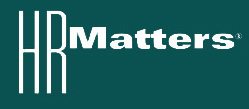Check – Then Double Check – New Potential’s Resumes
A recent blog article from Talent Management.com notes that according to a new survey, one in five workers knows someone who lied on a resume. TM.com’s office team in Menlo Park, California compiled research that notes these facts, according to an up-and-coming research firm named OfficeTeam. The research finds that when a resume looks too good to be true, that may just be the case.
The research shows that forty-three percent of managers polled believe job seekers include dishonest information on their resumes somewhat or very often. The same research notes that more than one in five, 21 percent, said that they know someone who stretched the truth on these documents. What sections would someone fib about? According to the research, most stretched the truth in regards to firstly, job duties and secondly, education.
OfficeTeam created the survey of managers and workers, and the survey was executed by an independent research firm. The results include responses from 1,1013 senior managers in organizations with 20+ employees, and 431 workers age 18+ and employed in office-style environments.
After compilation of the data, OfficeTeam strategized five tips that can help talent managers be sure that a potential employee’s information is the real deal:
1. Watch for ambiguity: When reviewing resumes, question vague descriptions of skills.
2. Ask once, ask twice: Pose interview questions that relate to specific skills needed.
3. Get the facts: Ask references to confirm basic information such as the candidate’s employment history, job titles, responsibilities and salary.
4. Branch out: Inquire if references know of others you can speak to about promising candidates.
5. Put them to the test: To get a true sense of a candidate’s abilities, consider hiring the person on a temporary basis before extending the full-time offer.
Hiring the RIGHT candidate for your organization not only improves the success of the organization, it improves your return on investment. Taking it slow and making sure you’ve hired the right fit is more important than hiring quickly. Check, double check, then triple check to be sure that the potential employee fills all the roles needed for this role within your organization. Click here to read the full article.
